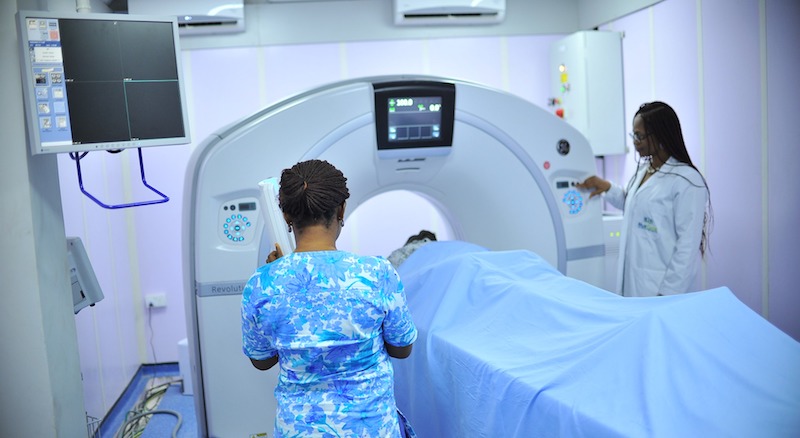One of the most challenging parts of being a health and science writer is reading and understanding scientific papers, especially if you are new to the health or science beats.
While there’s a steep learning curve to this skill, with practice you should be able to quickly review a scientific paper and extract the most important pieces of information, identify gaps in your knowledge (if it’s an unfamiliar topic, these gaps can be more like chasms), and find experts to interview.
I’ve been reading scientific papers for a long time, starting at the University of Delaware where a few of my graduate biology classes required students to read, understand, and explain a scientific paper to the class — a daunting task that prepared me for a career as a freelance writer.
Since that time, I’ve developed my own process for efficiently understanding scientific papers. Writing health news stories quickly has forced me to hone that method. Sadly, I don’t get paid to leisurely read scientific papers all day, so I have to be quick on my feet when it comes to reading new studies.
Here are a few tips and tricks that I’ve learned along the way. Give them a try. If they don’t work for you, find a method that you are more comfortable with. Feel free to share your own tips in the comments below.
Familiarize yourself with the structure of a scientific paper
The first step to reading and understanding scientific papers is knowing your way around a paper. Each scientific journal has its own preferences for how papers are laid out, but in general they have the following parts:
- Title. A well-written title should give you a quick overview of the research. Skimming titles (such as on Google Scholar) is a good way to find studies that might be relevant to your story.
- Author list. As the name implies, this lists the authors of the paper, including those who had only minor contributions. You will also find their affiliations and the contact information for the “corresponding author.”
- Abstract. This is a summary of the paper’s conclusions and sometimes directly mirrors the sections of the paper, with mini Methods, Results, and Discussion sections.
- Background or introduction. In some journals, papers start with a section that provides context for the new study, including the findings of previous research, why the topic is worthy of being studied, and how this current paper is different from earlier studies on the same topic. This section is useful for getting up to speed on an unfamiliar topic, as well as finding related papers that you should read.
- Methods. This lays out in detail how the researchers conducted the research, including recruiting participants, carrying out the tests or clinical trials, and doing the statistical analysis.
- Results. As the name implies, this is where the authors present their findings in detail, often with figures and tables.
- Discussion. Here the authors summarize the findings, talk about the limitations of the study, and describe the next steps for the research (either already planned or left to someone else to do).
- References. This lists all the scientific papers, textbooks, and other publications cited within the paper. Electronic versions of a paper will often link directly to those other papers online.
- Acknowledgements. This lists other people, companies, or organizations who contributed in some way to the paper. The funding source(s) may also be listed here, or in its own section.
- Supplementary information. Some researchers have so much information to present that some of it gets bumped to an accompanying paper. This may include in-depth descriptions of the methods or additional tables and figures. This can answer many of the questions you may have about the research.
Quickly find the most important information
Few science journalists have the luxury of taking their time writing a story. Even stories written with long lead times don’t usually allow for leisurely research. This is especially true if you are a freelance writer who gets paid per word count or per story — the longer you take to write a story, the less money you make.
So when you sit down to read a scientific paper (or stand up, if that’s your style), aim to find the most important information as quickly as possible. Here’s how I usually tackle scientific papers. This may not work for you, but give it a try and see how it goes.
I don’t usually read the paper from front to back like a book. Instead I skip around, generally in the following order. I will also often do a quick pass first, followed by a more detailed reading to fill in the gaps in my understanding.
- Abstract. Think of this as a summary of a complicated movie. While you can enjoy some movies without needing to know up front what the movie is about, if it’s convoluted and twisting, you may need an overview to keep you grounded. The abstract of a scientific paper works the same way by providing you with enough background on the research to be able to tackle the other sections. Be careful, though; sometimes the abstract contains errors that don’t match the paper itself.
- Discussion. Next I read the Discussion section. Many times I start with the paragraph that provides an overall summary of the findings. This may be the very last paragraph in this section or it may show up earlier. Then I read the Discussion section from the beginning to end. However, I don’t always make it all the way through, because sometimes I find that I don’t know enough about the results or methods to understand what the authors are writing about. In that case, I may jump back to those sections to clarify parts of the Discussion section that don’t make sense.
- Results. If I haven’t already looked at the Results section as I plowed through (waded is sometimes a better word) the Discussion section, I will go back and read this section in detail. I pay special attention to the figures, including their description text.
- Methods. I will then skim the Methods sections, looking for aspects that clarify what I’ve already read or to identify things that I don’t understand about how the researchers carried out their study.
- Introduction. If the paper is in an area that I’m unfamiliar with, I will sometimes read the introduction first, because that helps me get up to speed on the topic. Otherwise, I usually save it for the end. This section gives me a sense of what earlier research has shown. This is especially important if the new paper contradicts those earlier findings.
As I read through the paper, I highlight certain parts of the text (I prefer to do this electronically rather than with a paper copy). I also jot down questions that I have, including ones that I want to ask the researchers or an outside source, as well as things that I need to clarify for myself.
Acknowledgements and funding. Before I write my story, I will skim this section to look for potential conflicts about funding for the research, such as a study funded by the Peanut Council of Southern States showing that peanuts improve cognitive abilities. These are things that I usually mention in my story.

Identify potential experts to interview
A scientific paper is a treasure trove of potential expert sources to interview.
First, the authors themselves.
For many papers, the first author listed is the one who did most of the research work, such as the graduate student who led the study or the researcher who had a grant to do the research.
The last author is often the senior author, the one who is overseeing and guiding the research. If there is more than one senior author, they will both usually be listed at the end. And then everyone else involved in the research is listed in the middle.
Not every paper, though, follows this pattern. For example, some papers with a large number of authors may simply list them in alphabetical order by last name.
There is also a corresponding author indicated, with their detailed contact information listed. This is the person to contact if you have questions about the study, unless there is an accompanying press release that lists another contact.
The affiliations for all authors are also listed. This is a useful way to know which institutions to avoid when looking for outside sources to interview.
Which leads me to outside sources.
The References section is a great way to find outside experts to interview. If you go through the Introduction section, the authors will often mention earlier research, including studies that had findings that were different from what this study found. You can use the References section to find those papers, which should have the contact information for the lead researcher on that study.
The Acknowledgements section may also list the people who peer reviewed the study. Since they have already looked at the study, and shouldn’t have any conflicts of interest, you could contact them to get their take on the research. This is especially useful for papers with a narrowly focused topic that only a few researchers are familiar with.
Other resources for reading and understanding scientific papers
This is just a quick overview of my process. As I mentioned above, I don’t always follow this exactly each time. For topics that I’m very familiar with, I may skim the background section; for those that are new to me, I may take more time reading each section.
Practice is the best way to become adept at reading and understanding scientific papers. Also, asking questions — of yourself, of the experts you interview, of other writers — can help you gain a better grip on this skill.
If you want an even more detailed look at how to read scientific papers efficiently, here are a few good guides:
- The OPEN Notebook, How to Read a Scientific Paper
- Science, How to (seriously) read a scientific paper
- Science, How to read a scientific paper (a more humorous take on understanding scientific papers)
- Mark’s Daily Apple, A Beginner’s Guide to Reading Scientific Research
- How to Read a Paper: The Basics of Evidence-based Medicine and Healthcare, 6th Edition, by Trisha Greenhalgh
- How To Read And Critique A Scientific Research Article: Notes To Guide Students Reading Primary Literature, by Foong May Yeong


